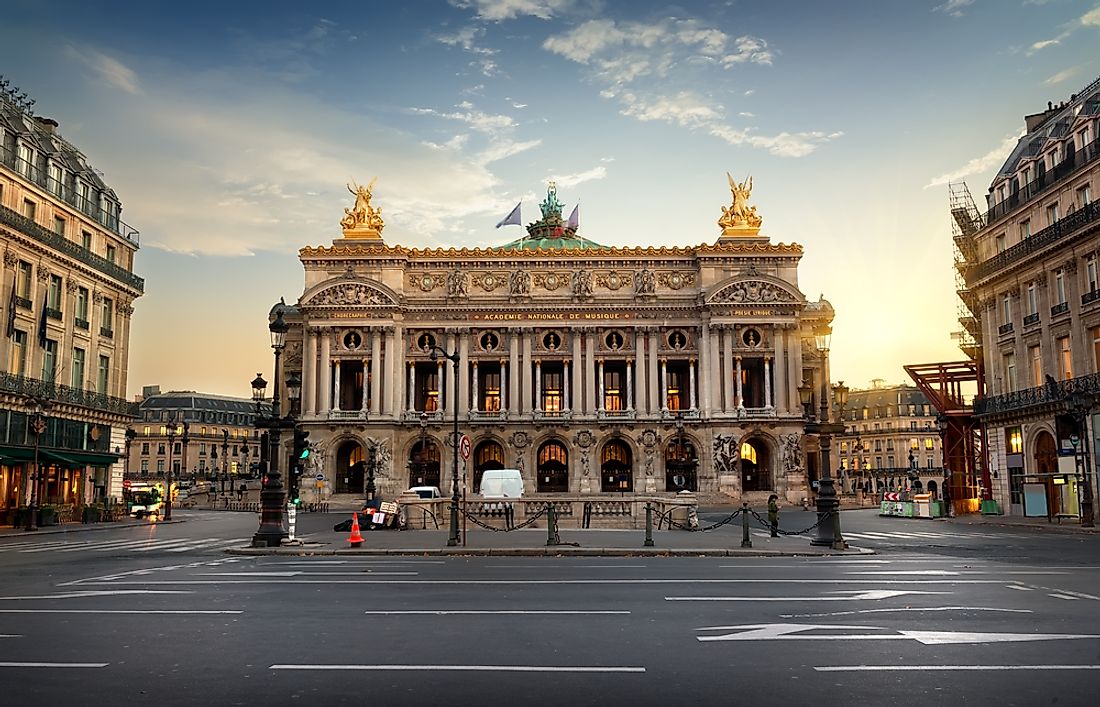Architectural Buildings of the World: Palais Garnier

The Palais Garnier stands as one of Paris' most iconic and celebrated structures. It was built in the 19th century, and it is located in the 9th arrondissement of Paris. The Palais Garnier represents the flamboyance associated with France's second empire.
History
The need for a new permanent building for the Opéra de Paris was experienced from 1821 as the opera then resided temporarily in the Salle Le Peletier. It was not until the establishment of the Second Empire that real efforts were implemented to build a new opera. An attempted assassination of Emperor Napoleon III on January 14, 1858, at the entrance of the Salle Le Peletier, made the need for a new opera more urgent. Georges-Eugène Haussmann, then the Prefect of Seine, approved a site off the Boulevard des Capucines upon proposal by Rohault de Fleury as the potential site for the opera. A design competition called by Emperor Napoleon III saw Charles Garnier's design for the opera picked by the jury. Garnier subsequently began operating from the Opéra Agence, his office situated on the construction site. He assembled a team of drafters and architects, and the opera was constructed from 1861 to 1875, after a pause from 1870 to 1871 due to the Franco-Prussian War. The opera was restored from 1994 to 2007, during which the electrical facilities and stage machinery were modernized, and its foundation and structure strengthened.
Architecture
The opera's style is regarded as Second Empire Beaux-Arts complemented with Neo-Baroque decorative elements as well as eclectic ornamentation. The principal facade lies on the building's south side, and it overlooks the Place de l'Opéra. Seventy-three sculptors, fourteen painters, and mosaicists designed the facade's ornamentation. The facade's right and left extremities are topped by two gilded figural groups made of gilt copper electrotype and named L'Harmonie and La Poésie. There are busts of many of the iconic composers such as Beethoven and Auber situated between the facade's columns. At the apex of the stage, flytower's south gable is the sculptural group poetry, Apollo, and Music. A group of rooms on the building's west side called Pavillon de l'Empereur houses the Paris Opera Library-Museum. The Pavillon des Abonnés is situated on the east side and it is covered by a dome measuring 13.5 meters in diameter. The opera's interior features a network of stairwells, alcoves, corridors, and landings. It has a large ceremonial staircase featuring a balustrade of green and red marble while the pedestals are decorated with female torchéres. The painting above the staircase was created by Isidore Pils. The Grand Foyer is 154 meters long, 13 meters wide, and 18 meters high and it opens into an outside loggia. Each end is named Salon du Soleil and Salon de la Lune respectively. The auditorium takes the shape of a traditional Italian horseshoe, and it can accommodate a crowd of 1,979 while the stage can house as many as 450 artists. Garnier designed a 7-ton bronze crystal chandelier surrounded by a ceiling area painted to depict scenes from the operas of 14 composers.
Tourism
Visitors flock to the Palais Garnier to watch opera and dance. As one of the most widely-known opera houses in the world, the Palais Garnier also receives numerous visitors eager to see its architectural wonders. The Palais Garnier is a symbol of Paris just like other monuments such as the Eiffel Tower and Notre Dame.
Influence Abroad
The Palais Garnier served as an inspiration for other subsequent buildings. The Warsaw Philharmonic edifice, as well as the Juliusz Slowacki Theater in Poland, were built based on the opera's design. The Theatre of Opera and Ballet situated in Lviv and the National Opera House of Ukraine in Kiev also took inspiration from the Palais Garnier. Other buildings which were inspired by the opera include the Hanoi Opera House in Vietnam, the Amazonas Theater in Manaus in Brazil, and the Municipal Theater of Sao Paulo.











